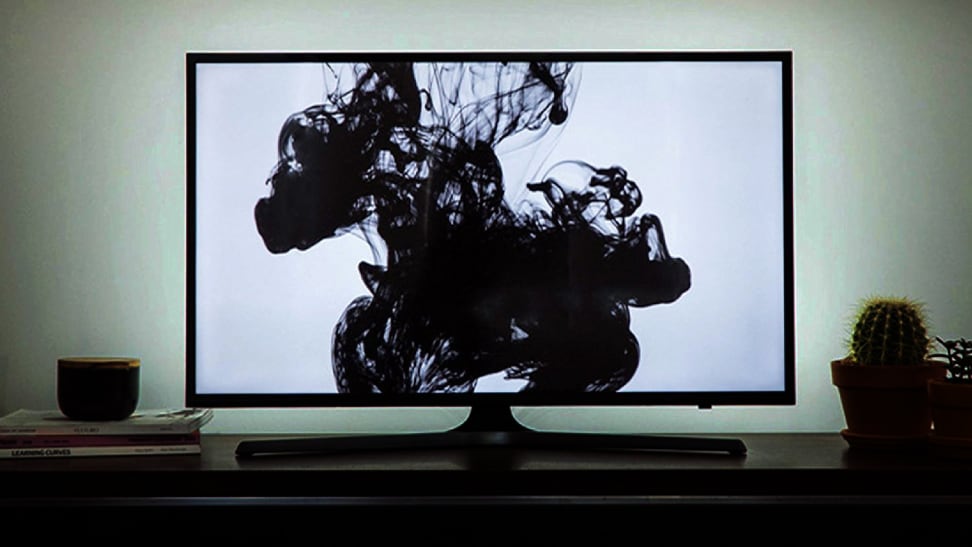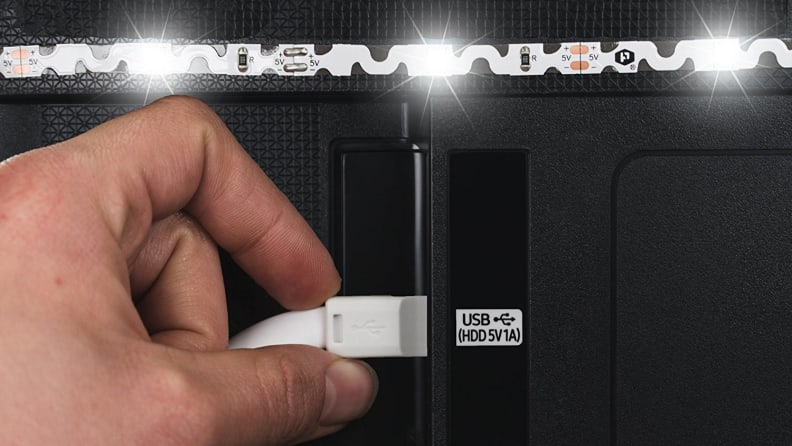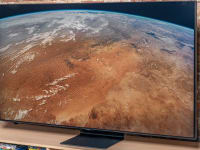This gadget completely changed my living room—and it cost less than $40
My home theater will never be the same.
 Credit:
Luminoodle / Amazon
Credit:
Luminoodle / Amazon
Products are chosen independently by our editors. Purchases made through our links may earn us a commission.
Despite the fact that I spend my days testing television and home theater gadgets, you might be surprised to learn that my setup at home isn’t extravagant in the least.
You see, like many of you, I struggle with an affliction known as “the money keeps going away,” and what happens is, I don’t have a lot of money.
My TV (though relatively big at 55 inches) doesn't quite make the list of the best TVs money can buy, my entire sound system consists of a single soundbar, and the couch cushion closest to the corner has grown lumpier with each passing rump.
The point is, I’m not exactly flush with cash, so any improvements I make to my living room set-up are usually incremental. Last week, however, I made an upgrade so significant that it left my head spinning—and the total cost was less than $40.
The upgrade I speak of? Nothing more than a long, flexible strip of LEDs that sticks to the back of my TV. When these little lights are on, they splash the wall behind my TV with a soft, steady glow. It might not seem like much in so many words, but in person, the added bloom of light makes the picture pop. As a bonus, when the TV’s off, the lights offer a pleasant, ambient luminosity that lifts the mood and soothes the soul.

For some people, bias lighting isn’t a new concept. Gamers, for instance, often outfit their monitors with bias lighting strips in an effort to ease eye strain. My colleague Lee dug into the science of bias lighting earlier this year. Yet despite being behind the curve, I’m too stoked about these brilliant little lights not to share my experience.
My particular bias light set-up consists of two components: an adhesive strip of Luminoodle LEDs for $25, as well as a Luminoodle receiver and remote control for about $13.
The LEDs are powered via USB, and the receiver is USB-based, too. The whole set-up plugs into the USB port on the back of my TV and uses phantom power. Here’s how it looks:

Most bias lights are powered by USB, and most TVs feature at least one USB port.
Because both the LEDs and the remote control run on USB, the remote control isn’t a necessary component, but trust me: It’s worth the small extra cost. The remote I use has three presets—low, medium, and high—but also allows for granular brightness control.
Setting up the lights is a relatively simple operation, but if you want to be extra cautious, a little masking tape will allow you to find the best possible LED placement before you permanently place it on your panel.

A remote control is optional, but you're probably going to want one just for the dimmer adjustments.
When it comes to placement, you’re obviously free to bedazzle the back of your TV any way you see fit, but the standard placement—in as much as there is such a thing—involves laying the LED strip down along the inside of the panel’s perimeter. With this placement, the lights create a halo on the wall around the TV.
But bias lighting does more than just lift the look of your living room. To my eye, it also improves the quality of the picture itself. The reason for this is simple: The light from the LEDs makes darker parts of the picture appear darker and lighter parts of the picture appear brighter. They won’t improve the performance of your TV, but they’ll probably improve your perception of your TV’s performance.
Choosing the right length is important: You don’t want to find yourself with an LED strip that’s too short to cover the size of your TV. Pay close attention to the available size options—if your TV is 50 inches or bigger, there's a good chance you'll need the longest available option. Additionally, most contemporary TVs have at least one standard USB port, but if yours doesn't, you'll have to find a port near your TV or use a power adapter.
For most of us, frivolously spending our way into massive home entertainment upgrades is completely unrealistic. Bias lighting is the opposite—it's affordable, it's easy, and its benefits are immediately apparent. Give it a shot!
Buy the Luminoodle bias LED strip for $24.99 via Amazon Buy the Luminoodle USB switch, dimmer, and remote control for $12.99 via Amazon
Our editors review and recommend products to help you buy the stuff you need. If you make a purchase by clicking one of our links, we may earn a small share of the revenue. Our picks and opinions are independent from any business incentives.


